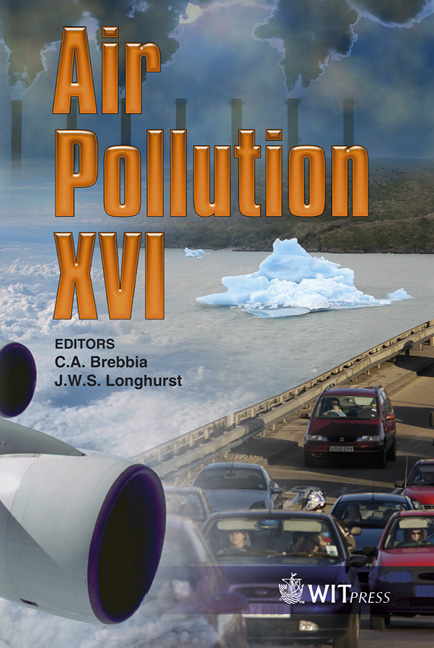Air Pollution From Traffic, Ships And Industry In An Italian Port
Price
Free (open access)
Transaction
Volume
116
Pages
9
Page Range
271 - 279
Published
2008
Size
832 kb
Paper DOI
10.2495/AIR080281
Copyright
WIT Press
Author(s)
G. Fava & M. Letizia Ruello
Abstract
In the present study, the levels of NOx, primary and secondary formed particulate matter (PM10, PM2.5) originating from the intensive commercial and industrial activities within the port zone of Ancona (Italy) were analysed. The data have been evaluated, calculating by a Weibull distribution approach, the hourly, or using a recoded time, statistics of the pollutants concentrations and meteorological parameters measured in an area situated in a zone of influence of the harbour area. This gave the opportunity to study the dependence of the processes on the local scale as well as the impact of the harbour area on the urban scale. The highest concentrations of PM generally occurred in the harbour area whereas the NO2 was found to be higher in the urban area. The pollutant transport from the harbour and related to the local dispersive ventilation capacity can become important in episodic situations even in the facing urbanised area. Keywords: PM10, PM2.5, NO2, harbour area, urban air. 1 Introduction Ancona is an Italian town surrounded by a busy sea and hilly streets, with a port for agricultural and industrial goods, traffic and passengers, and for fishing boats. Mineral and vegetable dust coming from the intensive commercial and industrial activities on vegetable seeds such as soybean, sunflower and castorbean add to the gaseous Volatile Organic Compounds (VOC), SO2 and NOx from heating and ships sailing around the harbour. The urban area is characterized by high population density and economic development. The resulting pollutant emissions place an increasing pressure on the air quality of this area. Whereas in the past the major reasons for poor air quality were
Keywords
PM10, PM2.5, NO2, harbour area, urban air.





